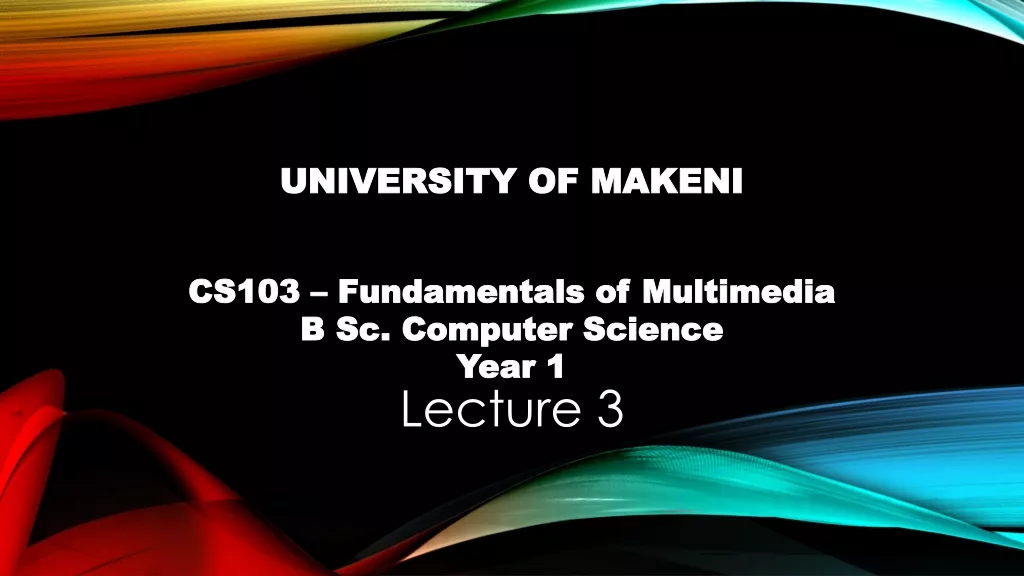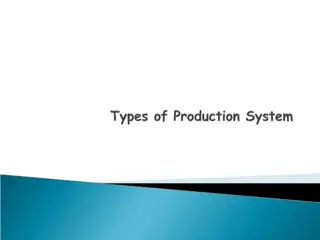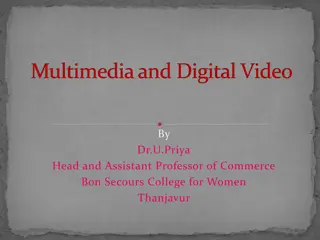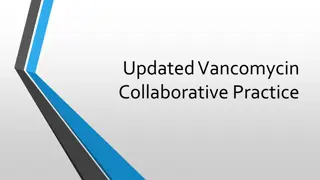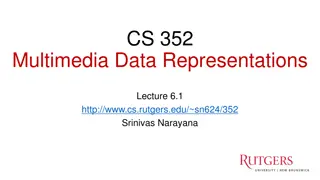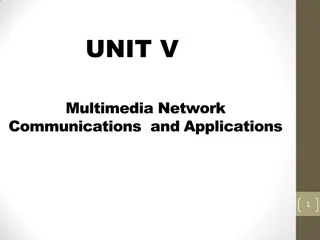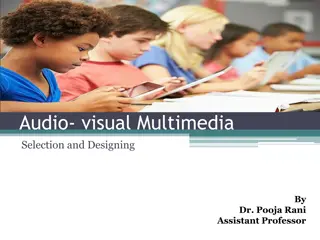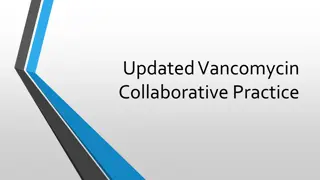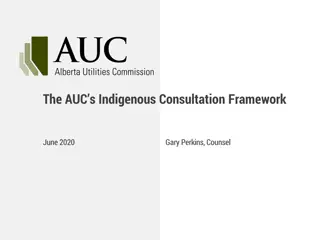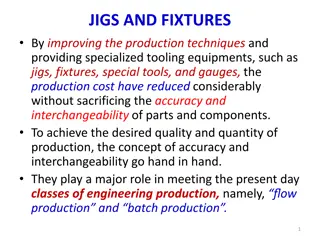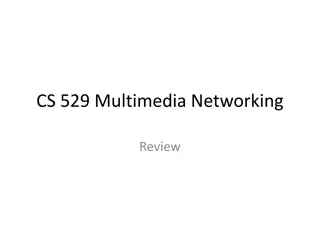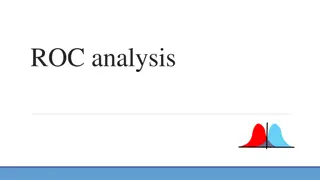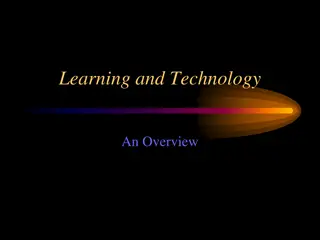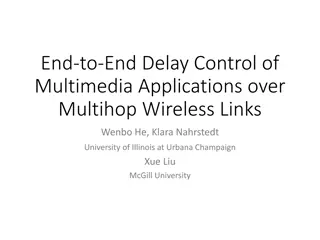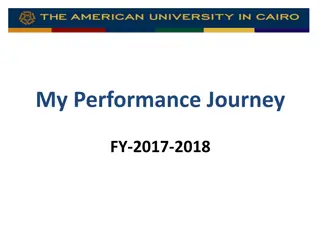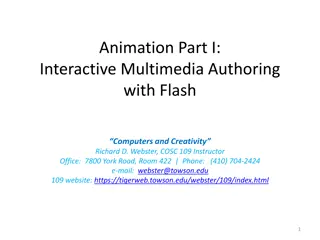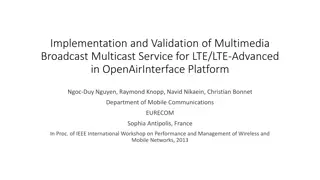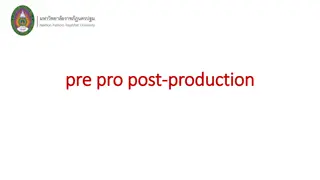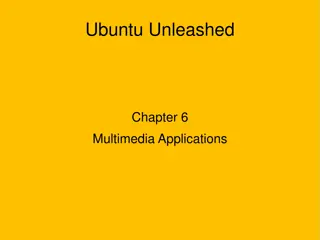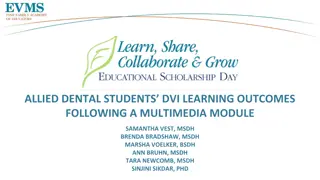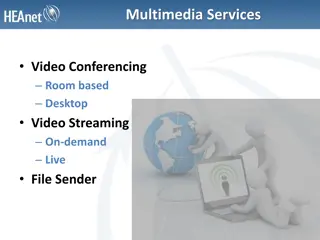Engaging Students in Multimedia Content Production at AMICAL-AUK-AUC
Explore how student-centered teaching and learning, utilizing innovative technologies, fosters active engagement and critical thinking in academia. Discover the impact of multimedia content production on assessment methodologies, exemplified by successful collaborations and award-winning projects at the American University in Cairo. Witness the evolution of pedagogy towards 21st-century skills acquisition through a blend of classroom-action research and community-based learning initiatives.
Download Presentation

Please find below an Image/Link to download the presentation.
The content on the website is provided AS IS for your information and personal use only. It may not be sold, licensed, or shared on other websites without obtaining consent from the author. Download presentation by click this link. If you encounter any issues during the download, it is possible that the publisher has removed the file from their server.
E N D
Presentation Transcript
AMICAL - AUK - AUC ENGAGE STUDENTS IN MULTIMEDIA CONTENT PRODUCTION PRISTINE, KOSOVO, MARCH 21-22, 2014 STUDENT MULTIMEDIA CONTENT PRODUCTION An Alternative To Conventional Forms of Assessment PANDELI GLAVANIS, Professor, Director, Community-Based Learning Program and Associate Director, Center for Learning & Teaching, at AUC AHMAD ZORKANI, Manager, Multimedia Services, Center for Learning & Teaching at AUC
Student-centered Teaching and Learning Most effective pedagogy surpassing conventional lecture-based teaching: enhancing active learning & critical thinking Enables students to acquire and use innovative learning strategies Facilitated by the Emergence of New Learning Technologies Enables students to acquire New 21st Century Skills Required by Employers
Inspiration, Limitation, The Challenge This presentation will focus on Classroom-Action Research (CAR) conducted in one undergraduate course at the American University in Cairo in Spring 2013. Sociology 203: Social Problems of the Middle East Close collaboration between a faculty member, a Multimedia expert, and students. Introduced new learning technologies in the teaching and learning process
Inspiration, Limitation, The Challenge Over several years class assignments in my undergraduate and graduate courses required a community-based learning project and a multimedia final presentation. Fall 2012 collaboration between my AUC graduate course POLS504: Research Methods in Political Science and a Cap- Stone course in Multimedia at Cabrini College, USA Produced a multimedia output (web site) that has been awarded four major distinctions up to now N.B. special appreciation to Cathy Yungmann and her students at Cabrini College for the excellent Multimedia Creation
FOUR DISTINCTIONS 1. College Media Association (CMA) Pinnacle Award for Best Multimedia Feature Presentation; 2. 2013 Communicator Award of Distinction in the Student Website category given by the International Academy of Visual Arts; 3. 2013 Best Practices in Teaching With Tools and Technologies awarded to Cathy Yungmann by the Association for Education in Journalism and Mass Communication (AEJMC). 4. A Prototype for Global Student Journalism: Covering Conflict Without Going There" for the Scholarship of Application Competition organized by the Research Committee of the Association for Education in Journalism and Mass Communication (AEJMC
AWARD WINNING STUDENT CONTENT CREATION http://youthvoicesrise.com
BENEFITS DERIVED As Cathy Youngmann, (Youngmann, 2013) noted Sometimes, when the place is dangerous or remote, a digital handshake is a viable path to global learning for college students." It seems that providing students with the opportunity for global education experiences is currently a major initiative in higher education. The benefits of preparing college students to become global citizens through international contacts are obvious.
Exciting Learning Youngmann noted that the true learning excitement took place during Skype interviews with students in Cairo and my American students were quite moved by the personal life stories that their Egyptian peers shared during individual video Skype sessions. Youngmann concludes that This was an amazing experience for Cabrini students, who grew in their understanding of the Middle East, of Islam, of journalism, of technology and about the importance of stepping out of their comfort zones. Similarly the Cairo-based students were delighted with the experience and in particular that the final output was a website entitled, Arab Awakening: A View from the Inside, that won awards.
Inspiration, Limitation, The Challenge Spring 2013 attempt to achieve the same at AUC with ONLY AUC resources Faculty Time Limitations: considerable increase in work load Required Expertise: had to rely upon Multimedia expert for technical multimedia support throughout the course Discovered Student Limitation!!!: Students know much less than we think about applying Web 2.0 technologies; training and support required. Discovered Technology Limitation: Learning technologies DO NOT always articulate well together; research and adaptation required e.g. Google MAIL mark PBWorks.com invitations as SPAM
Literature Review of Issues Pros: Many educators argue that Web 2.0 tools provide richer and more engaging pathways to learn with great potential for facilitating student multimedia content creation, interactive information sharing, student-centered design and collaboration (Cochrane, 2010; McLoughlin and Lee, 2008). Studies suggest that students gain a better understanding of subject knowledge and develop transferable skills while using Web 2.0 tools (Lee et al., 2006). Cons: However, there are authors who believe that not all students may be familiar with technology (Crook et al., 2008; Kennedy et al., 2007) and with some questioning the ideology of Web 2.0 which they claim has not been seriously evaluated and has affected Pedagogy 2.0, resulting in its failure (Williamson, 2009). (Teaching and Learning with Plymouth University, 2012, p. 3)
Responses from Classroom Action Research (CAR) Students displayed mixed perceptions of producing multimedia content. The majority enjoyed the experience of being challenged to work alone and create, while a minority felt it was a frustrating experience; this was particularly with a couple of mature students who noted, As a mature student I felt extremely disadvantaged. Of those that benefited from the experience they highlighted the following: Increased understanding of subject knowledge Gained a sense of accomplishment Enjoyed and benefitted from collaboration with peers group work Increased critical thinking skills and improved communication skills Produced Iterative learning Can remember the course content better than if I had just written an essay. Had fun and enjoyed learning
Inspiration, Limitation, The Challenge Nevertheless, as Joan Lippincott notes For such skills to be acquired by students they need to be integrated into the syllabus and enable students to acquire them while preparing multi-media content as part of their assignments Student Content Creators: Convergence of Literacies, November/December 2000, EDUCAUSE Review pp 16-17. Thus, we persevered Final grade in course depends on quality of multimedia production Provide considerable research and technical scaffolding and training to students
Action Plan Collaboration, Tools, Assessment Course syllabus needs to be designed with new criteria in mind. Learning outcomes need to be focused on new objectives: pedagogic and multimedia technical Assignments need appropriate rubrics and scaffolding Students need to be informed of increased work load at start of semester
Action Plan Collaboration, Tools, Assessment Faculty Technologist Students Identifying appropriate tools Designing assignments IT support & Training
KEY TOOL: CLASS WIKI ON PBWORKS http://soc203spring2013.pbworks.com/
ADDITIONAL EXAMPLES http://lectures.aucegypt.edu/Panopto/Pages/Viewer/Default.a spx?id=d2922ff6-d7b6-4660-971c-0f2fb511d78b http://lectures.aucegypt.edu/Panopto/Pages/Viewer/Default.a spx?id=fd17113e-882f-4bb2-9d94-39eb42dbc90f http://lectures.aucegypt.edu/Panopto/Pages/Viewer/Default.a spx?id=90e5bf88-3f52-4bd6-bb36-93d6e68e62b6 http://lectures.aucegypt.edu/Panopto/Pages/Viewer/Default.a spx?id=828f7ce1-910a-4e78-99e7-d40c93f7a378
Action Plan Collaboration, Tools, Assessment Panopto Lecture Capture
Action Plan Collaboration, Tools, Assessment Video Conferencing with American University in Central Asia N.B.special appreciation To Galina Gorborukova and her Students at AUCA
Action Plan Collaboration, Tools, Assessment
Action Plan Collaboration, Tools, Assessment Students are required to work in groups of maximum 4 10% of final on individual active class participation 20% of final grade on individual assignment: annotated bibliography 70% of final grade on collaborative group produced and submitted written text and multimedia content assignments: 500 and 2,000 word essays PLUS 5 and 10 minutes multimedia presentations N.B.WIKI enables faculty to monitor in great detail the contribution of each student to group work and thus accordingly award grades Grading rubric includes academic and technical objectives
End of Semester Student Evaluation University administered end of semester instructor and course evaluation produced very positive feed back Instructor: 4.85 (mean) on a scale of 5 Course: 4.75 (mean) on a scale of 5 Technical Support (TA) also received positive feedback CONCLUSION: Despite extra work load students enjoyed conducting original research and producing multimedia content as their assignments.
THANK YOU Pandeli Glavanis pandeli@aucegypt.edu Ahmad Zorkani ahmad.zorkani@aucegypt.edu www.aucegypt.edu/llt/clt









